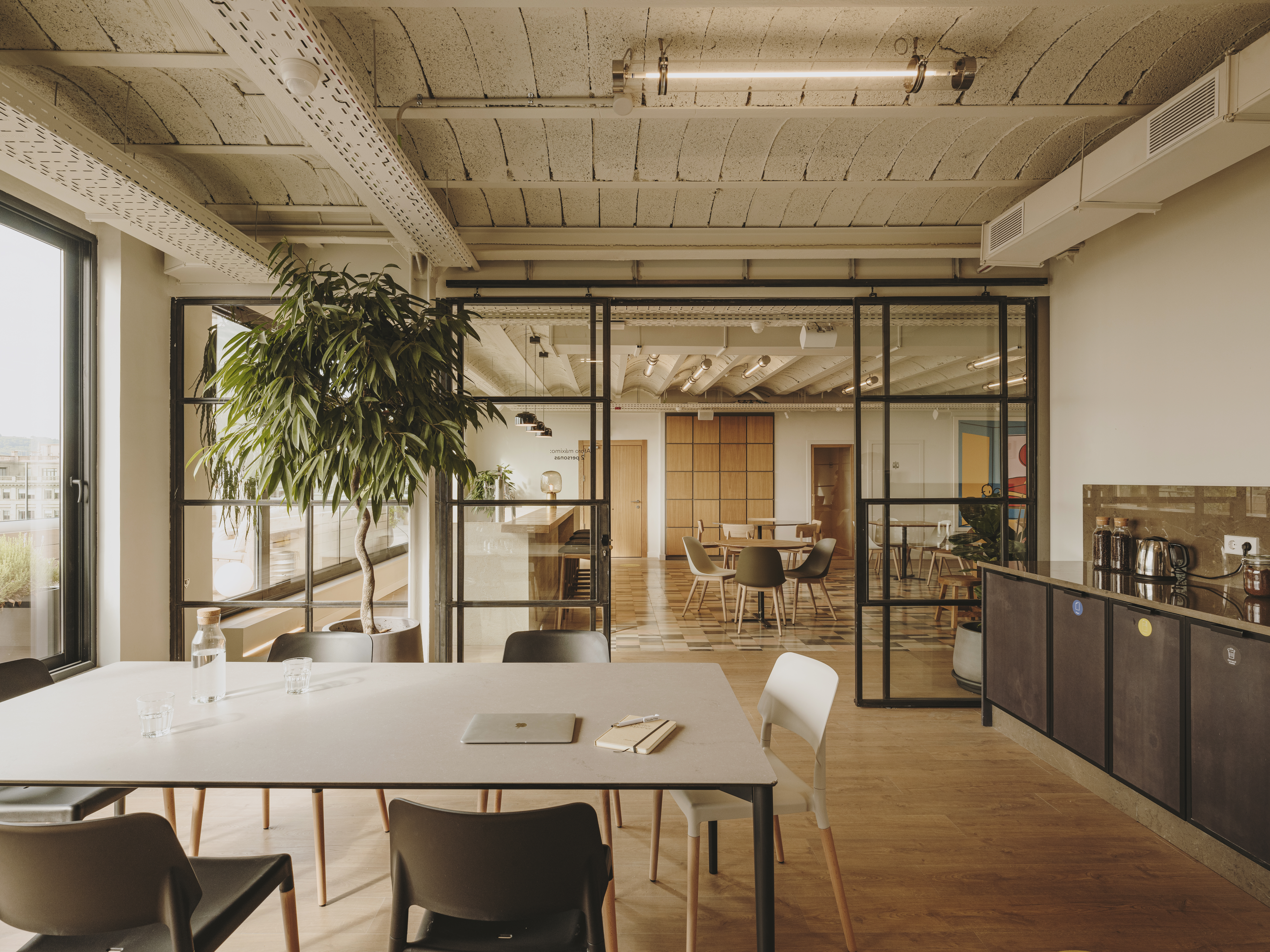
Learning
Learning
Office design: How to adapt it to a flexible future
June 09 / 2022
The traditional concept of the office, understood as an unalterable, individualistic workspace with predictable evolution, had been mortally wounded for quite some time. The pandemic finished it off.
The teleworking boom emerged as the ideal solution to the adversities generated by Covid-19. Fortunately, the situation has improved since then and many of the workers are going back to the offices or benefiting from the hybrid working model.
However, a new office design is necessary to achieve adequate coherence with the times. They have to be offices adaptable to workers. Collaborative and flexible spaces where they can carry out tasks other than those they can do from home.
New concepts for the design of modern offices
The process of updating the offices is based on the application of the following concepts:
- Creation of a space that encourages collaborative work.
- Promotion of networking.
- Improvement of connectivity platforms.
- Availability of private areas with special acoustic or isolation conditions for the creative work of small groups.
- Flexibility in the face of constant changes.
At Cloudworks we want to dig a little deeper into these ideas of adaptable office. Let’s see how you can try to improve the physical and mental well-being of employees so that the face-to-face experience becomes a choice, not an obligation.
Office design adaptable to constant changes
Adaptation to the hybrid work model
Although remote work is here to stay, the office is not going to disappear. Therefore, it is essential to create a space that has some areas of privacy like those that workers have become accustomed to at home.
Technology is a necessity in the office and allows optimal planning and collaboration between the teams in the office and those located remotely.
Examples of modern office design are those that have 360º cameras, which by merging images during the videoconference, allow remote participants to feel as if they were in the meeting room.
Flexibility above all
Traditionally, offices were planned in advance and did not take into account the possible needs that could arise after their construction. The distribution was related to the number of employees and the size of the premises. Based on this, the number of tables and necessary spaces was determined.
Today flexibility prevails. The modular approach allows rooms to be built and changed into various configurations based on the needs of the company and the employees. These adaptable offices facilitate interaction between the staff who occupy them.
The design of open space offices is also increasing. Fixed offices and desks disappear and it is the worker who chooses where to stand based on the task to be performed.
In a future working life as variable as the one that is glimpsed, companies must adapt quickly to the demands of their employees. For this reason, turning offices into living, dynamic spaces will ensure that they are always ready to take on new challenges.
Healthy workspaces
Employees must feel comfortable in the place where they carry out their activity. As much or more than at home when they work remotely. If this is achieved, it will boost the development of their skills and increase their productivity.
A worker with a healthy physical and emotional state is a competitive professional. Taking care of their well-being is taking care of the company. For this reason, it is very important to design modern offices with the presence of ergonomic furniture and pay the necessary attention to correct lighting and acoustics.
The comfort offered by the new office designs makes these workspaces a very attractive option for professionals who maintain their activity remotely. It is no longer about going back to the usual office. The changes must make it the place they would never have left.
A place to interact
The future prompts to make it easier for professionals to collaborate in their workplace. The key is to eliminate those obstacles that prevent it. Possible improvements include easy access to useful information for people who are part of the same project; full connectivity through rooms with facilitating tools and devices; spaces for relaxation to take a small break during the work day and interact with colleagues …
At Cloudworks we adapt to changes quickly and enthusiastically. Aware of the transformation of work models in the last decade, we had it clear from the beginning. Spaces must be created with workers in mind. An agile and collaborative environment conditioned for the development of all kinds of events and synergies. All this equipped with high-speed internet, a wide variety of rooms and flexible plans for coworkers. The ideal space to work comfortably while being a member of a competent and dynamic community.
Do you want to become a coworker? Get in contact with us!
